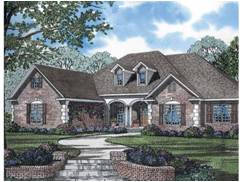 When building your own home you’re faced with a number of decisions that will impact cost and schedule and every owner hopes to anticipate as many costs as possible — that means including reasonable contingencies.
When building your own home you’re faced with a number of decisions that will impact cost and schedule and every owner hopes to anticipate as many costs as possible — that means including reasonable contingencies.
Initially an owner will need to answer a few questions before even starting the design process:
- Will you purchase a ready-to-build design, use a homebuilder’s in-house designer or contract your own?
- Will you contract all the work directly with each trade?
- Will you choose to perform some of the work yourself?
- Will you purchase any of the materials directly and then contract the installation?
- Will you hire a homebuilder or general contractor to do the work?
- Will you hire a construction manager to manage the entire process on your behalf?
Each option has pros and cons — all of which affect your budget. This article will cover 25 unbudgeted costs, often missed or overlooked in the “building your own home” process. This list isn’t all inclusive but will at least provide some food for thought when establishing your budget — the goal here is you’ll be that much farther ahead.
25 Cost Considerations in Building Your Own Home
A clearly defined scope of work and setting aside a reasonable percentage of the overall cost of construction as a reserve for unplanned cost overruns will help to buffer any unanticipated expenses. Focusing on the more visual aspects of a new home like layout and features often results in overlooking some of the functionality that can add substantial cost after the fact. Here are 25 potential unplanned cost considerations:
- Subsurface Conditions – Without a detailed soils investigation or soil borings on the property there may be rock requiring expensive (and schedule impacting) hard dig or removal and replacement of adequate soil to achieve required compaction for your foundation.
- Reasonable estimation of materials waste or overage when building your own home – this is the portion of materials purchased for construction that cannot be used productively, is lost, gets damaged or is misused.
- Budgeting for or failing to secure a homeowner’s insurance policy covering the home during construction. This can protect you from any damage which may occur during construction and can provide liability coverage in the event someone is injured on your property. Theft of materials may be covered by a contractor’s insurance and a homeowners policy usually doesn’t cover theft until your home is lockable or made secure. A dwelling and fire-type policy is an option that will protect just the structure itself.
- Reimbursable expenses for design, engineering and construction professionals – These items like plan reproduction costs for building department submittals, as-build documentation, travel expenses, permit fees, etc. are outside any design or engineering costs. How reimbursables are handled can be included in your contract language.
- Neighborhood covenants, codes and restrictions may impact elements of your design resulting in unanticipated costs.
- Connection fees for building your home when connecting to a city’s or county’s public sewer utility.
- Health Department fees for pools, spas, septic systems. Requirements for pump sizes based on pool size/type and water exchange rates can impact cost.
- Fire Sprinklers – Some jurisdictions, based on the size of the home, require fire sprinklers if a home is over a specified square footage.
- Public Utilities Approved Material List – When having your home designed or if purchasing a ready-to-build design, few designers will research or include in project specifications, approved materials that may be mandated by local utilities. If undertaking the construction yourself or through a contractor, this can be an issue on progress inspections conducted by your building department and result in tear out and replacement. Some utilities also have an approved contractors list for installing their utilities on your property.
- Third party testing in building your own home – This includes testing of concrete to ensure it reaches specified strength, plus footings, reinforcing steel, backfill to achieve compaction, masonry and steel if applicable in the design.
- Costs for bringing utilities to the property like phone and cable and/or the cost of having to tie into utilities in a public street rather than on your property.
- Empty conduit or rough-in for future installations. This is often missed and becomes a considerable post-construction cost if needed later. Considering and making a cost allocation for empty conduit to accommodate future site lighting, exterior home lighting, security or irrigation can save big dollars later.
- When building your own home your preferences for interior floor, utility, cable, voice and data outlets in specific locations are often missed.
- Waterline rough-in for ice makers, fountains or water features, and humidifiers gets overlooked.
- Rough-in for water softeners and water filtration systems is frequently missed when building your own home.
- Rough-in for a central vac system is often overlooked in the design phase and added at a moderate cost during the construction phase.
- Setting aside funds for changes, resulting in additional cost, based on zoning, building department plan review and code compliance.
- Sealing of natural stone floors, walls or grout is rarely budgeted when building your own home.
- Sealing of concrete and masonry to prevent spalling and efflorescence is often overlooked.
- Extended warranties for major mechanical items — for example, adding a 5-year extended warranty on the compressor of a new air conditioning unit.
- Increases in material cost on specified items or items that may be discontinued prior to purchasing will add cost. Addressing material price increases in your contract language prior to beginning construction may mitigate some of this expense. Having to change product specifications post design can impact cost and schedule.
- Do you need to make accommodation for a standby generator, sump pump and pit if in a geographical area with severe weather impacts or high water table?
- If you are building with a construction loan, closing costs for origination fees, title insurance, lender fees, recording fees, government fees and interest may be underestimated.
- Post-design upgrades and field changes can significantly impact a budget. Weigh the benefits of any upgrades – will they add value to your life or are they just aesthetic? Will they add value to the home should you choose to sell in the future?
- Choosing the right contractor and/or subcontractors is critical to the successful completion of the project. Not adequately researching a contractor’s or subcontractor’s licensing, work history, safety record and insurance or bonding ability can substantially impact a budget and leave you responsible for contractor mistakes or shortfalls.
Tagged with: construction budgets • construction costs • cost overruns • new home construction
Filed under: Cost Estimating





